Common Ragweed (Ambrosia Artemisiifolia)
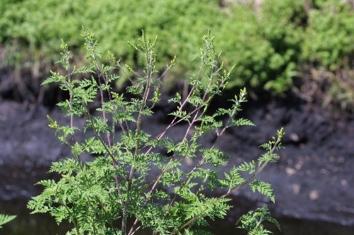
Asteraceae (Sunflower family)
Group: Dicot (broadleaf)
Erect, branching annual herb, native of North America. It is found in cultivated fields, noncrop areas, waste areas, and landscapes. Common ragweed pollen is a primary cause of hay fever. It is often confused with ragweed parthenium
Seedling cotyledons are dark green, thick, rounded above and narrow at the base. First true leaf is pinnately lobed and hairy. Later leaves are bipinnately compound and hairy. Youngest leaves are opposite becoming alternate from the fourth node. Stems are erect and hairy.
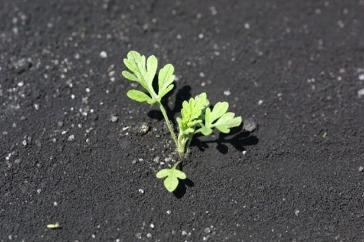
Leaves of mature plants are sometimes opposite near the base and alternate towards the apex. Petioles are conspicuous on lower leaves but sometimes inconspicuous on the upper leaves. Leaves are narrow to broadly egg-shaped in outline, hairy and deeply twice dissected or compound
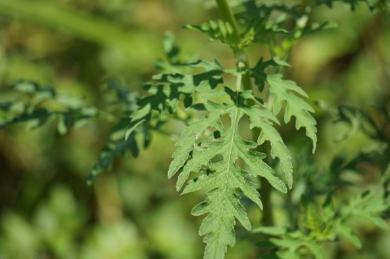
Stems are erect, 1 to 6 feet tall, with branched, hairy stems in early stages and becoming smooth later.
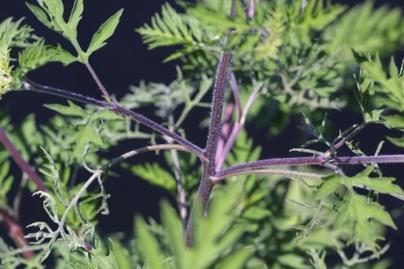
Flowers are small, green and inconspicuous in clusters on terminal branches. Male flowers look like inverted cups and are in long spikes at the end of branches. Female flowers are in clusters in the axils of upper leaves and branches.
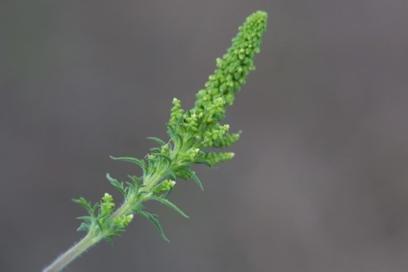
Root is a shallow fibrous system with a taproot.
Propagation is by seed.
